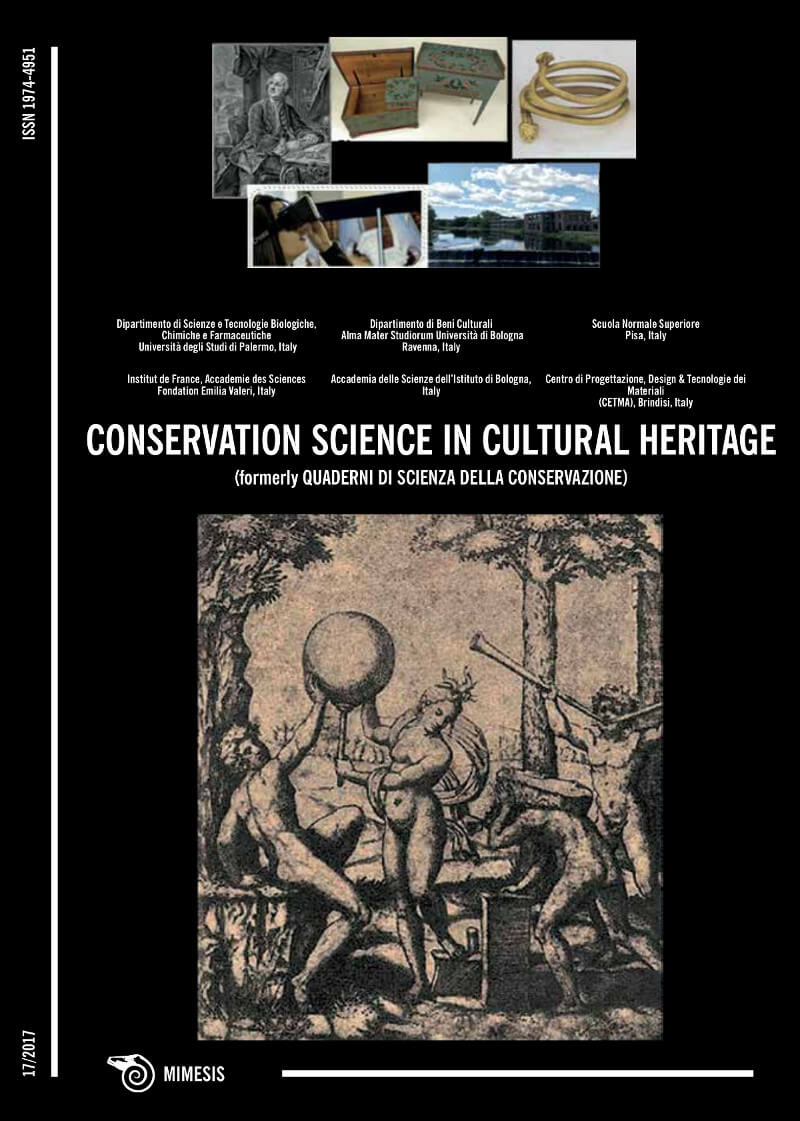Semiotics of Animal Motifs in the Jewelry of the Achaemenid Era
DOI:
https://doi.org/10.6092/issn.1973-9494/7954Keywords:
Achaemenid art, animal motifs, jewelry, semioticsAbstract
Achaemenid art is a combination of different nations' art and a reflection of thought and religion of the era. Plant, human, animal motifs and a combination of them have been used in the art of the Achaemenid era. But the abundant use of animal motifs, especially in jewelry, has distinguished the Achaemenid art. The present paper aims to study the animal symbols in the jewelry of the Achaemenid era. Following a definition of the symbol, it evaluates the role and status of animal symbols in Achaemenid jewelry by categorizing and analyzing those motifs. Descriptive-analytic method has been used in this paper and data has obtained from library research. According to the results of the study, it can be found that the symbolic animal motifs were used in the jewelry of the Achaemenid era to express the power and majesty of the king and the sovereignty; they demonstrate the Iranians' particular viewpoint toward the world, religion and custom of the era and artistic qualities of the related nations.References
Jung, C. (1999). Man and his symbols. (M. Soltanieh, trans.). Tehran: Jami publication.
Eliade, M. (1995). Myths, dreams and mysteries. (R. Monajem, trans.). Tehran: Fekre Rooz
Behzadi, R. (2001). The role of symbol in mythology span. Iranian Studies, 1.
Bagheri, M. (2010). Reflection of religious thoughts in Achaemenid motifs. Tehran: Amir Kabir.
Gholizdeh, Kh. (2013a). Encyclopedia of mythical beasts and related terms. Tehran: Parse publication.
Gholizdeh, Kh. (2013b). The culture of Iranian mythology based on Pahlavi texts. Tehran: Parse publication.
Hall, J. (2001). Illustrated dictionary of symbols in Eastern and Western art. (R. Behzadi, trans.). Tehran: Farhange Moaser.
Prada, I. (2004). The Art of ancient Iran. (Y. Majidzadeh, trans.).Tehran: University publication.
Tanavoli, P. (1977). Lion Persian rug. Tehran: Art festival organization.
Curtis, J. and Tallis, N. (2005). Forgotten empire: the world of ancient Persia. Berkeley: University of California Press.
Yahaghi, M.J. (1996). Mythology culture and fiction references in Persian literature. Tehran: Olume Ensani va Motaleate Farhangi.
Ansari, J.H. (2008) Semiotics of griffin and evolution of its form in the art of pre-Islamic Persia. Ketabe Mahe Honar, 118.
Memarzadeh, M. (2009). Iranian works in the Hermitage Museum in St. Petersburg, Russia. Tehran: Sadafe Sama.
Grishman, R. (2000). The history of Iran from the beginning to Islam. (M. Behforuzi, trans.). Tehran: Jami publication.
Afhami, R. (2006). Visual culture governing the representation of the Achaemenid art. (doctoral thesis, Tarbiat Modares University).
Kohenoor, E. (2004). The study of iconic or symbolic motifs in the traditional arts (Vol. II). Tehran: Noore Hikmat.
Bahar, M. (2008). From myth to history. A. Ismail (Ed.). Tehran: Cheshmeh publication.
Downloads
Published
How to Cite
Issue
Section
License
Copyright (c) 2017 Shahryar Shokrpour, Reyhaneh Rashidi, Fatemeh Barmaki
Copyrights and publishing rights of all the texts on this journal belong to the respective authors without restrictions. Authors grant the journal right of first publication.
This journal is licensed under a Creative Commons Attribution 4.0 International License (full legal code).
See also our Open Access Policy.






